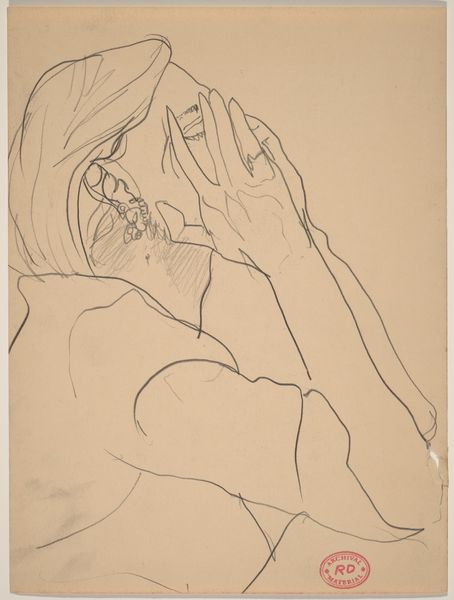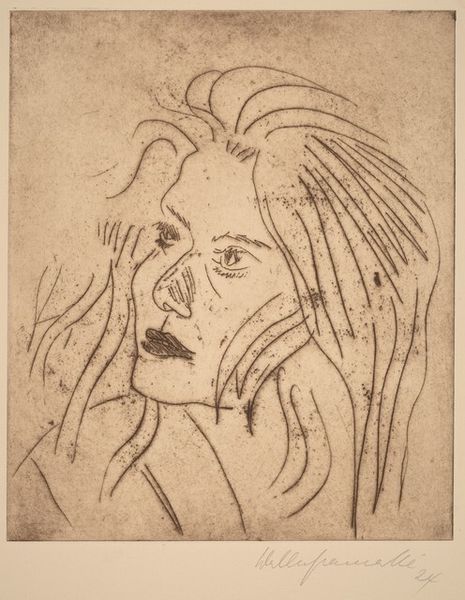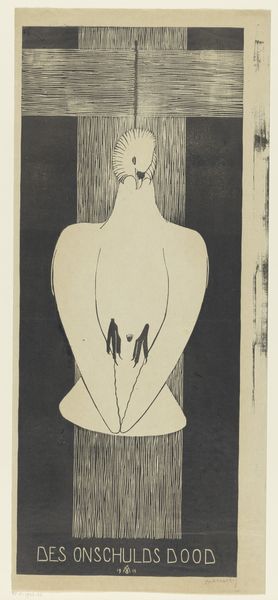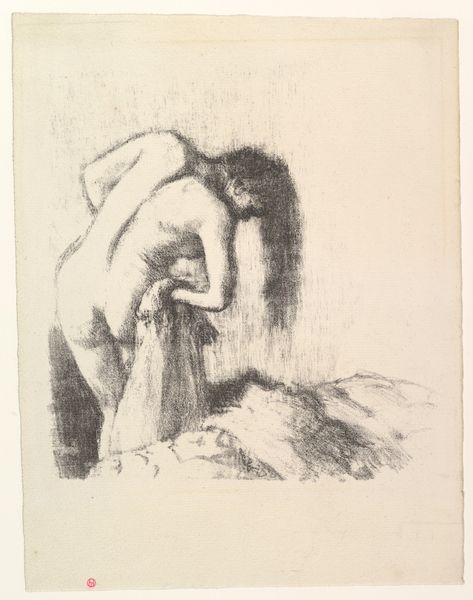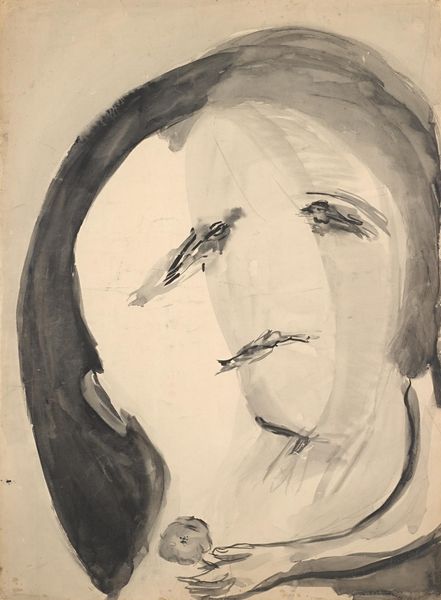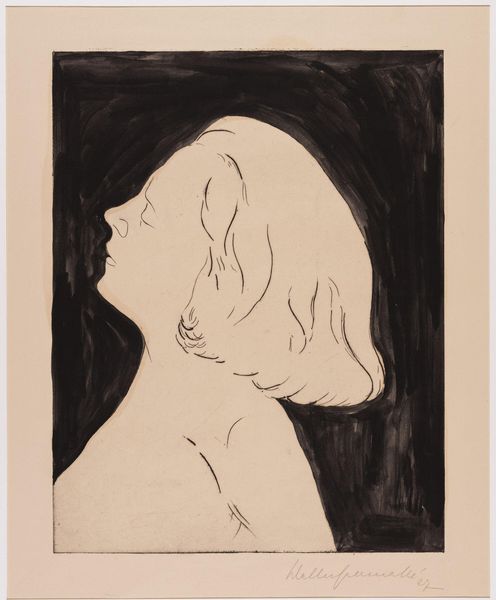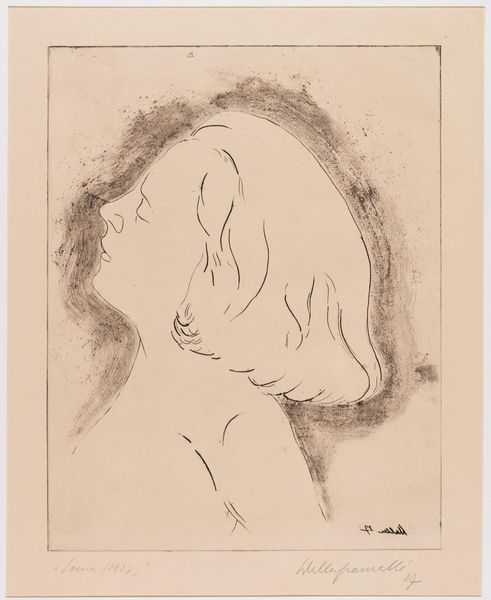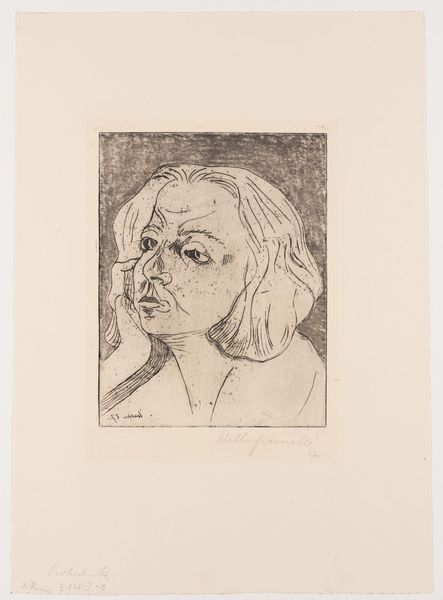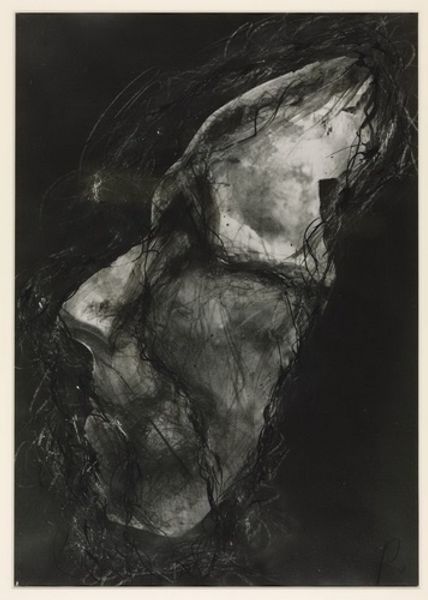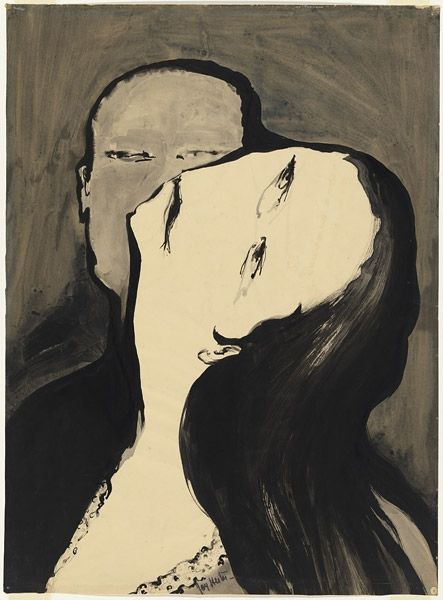
print, etching
#
portrait
# print
#
etching
#
figuration
#
line
#
portrait drawing
#
realism
Dimensions: Image: 195 x 149 mm Sheet: 302 x 260 mm
Copyright: National Gallery of Art: CC0 1.0
Editor: We're looking at Flora Blanc Reeder’s etching titled "Wonder," made around 1945. The subject’s face is obscured by hands, creating this intense sense of… I'm not sure, almost like suppressed emotion. What do you see in this piece? Curator: Immediately, my mind goes to the material process of etching. Consider the labor involved. Reeder meticulously incised these lines into a metal plate. Notice how the varying pressure creates different tones. It’s this deliberate process, this act of controlled mark-making, that brings 'Wonder' into being, transforming base metal into something evocative. This was produced during WW2: how do you think available materials factored in here? Editor: I hadn't considered that angle. Do you mean the limitations of resources impacted Reeder's choice of etching or maybe influenced the expressive quality? Curator: Exactly! During the war years, resources were often diverted towards the war effort. Things like canvas, paints, even studio space, became scarce for some artists. Etching, with its reliance on relatively smaller quantities of metal and acid, and the portability of the printing process, might have become a more viable option for those seeking artistic expression amidst material constraints. The image feels small and constrained. Perhaps a commentary. But the etching technique, demanding precision and patience, almost contrasts the raw emotion you mentioned earlier, what do you make of that tension? Editor: That's a great point. The delicacy of the lines versus the weighty emotionality feels almost… intentionally jarring? Almost like a performance. It invites us to consider the social function of displaying or hiding. It makes you think. Curator: And see how Reeder uses cross-hatching in the hands, to define the mass, and the shadow, and then simpler outlines in the hair and face, almost mass-produced imagery. And the title itself: "Wonder." This could indicate something more, perhaps challenging ideas around industrialised beauty during the War era, in terms of cultural production. Editor: This has opened my eyes. Considering the constraints of the era, the labor involved in etching, makes me appreciate how Reeder transformed a simple technique into a powerful exploration of social contexts, labour, and art itself. Curator: Indeed. Shifting our perspective from a purely aesthetic experience towards the material and historical production process really enriches our understanding.
Comments
No comments
Be the first to comment and join the conversation on the ultimate creative platform.
